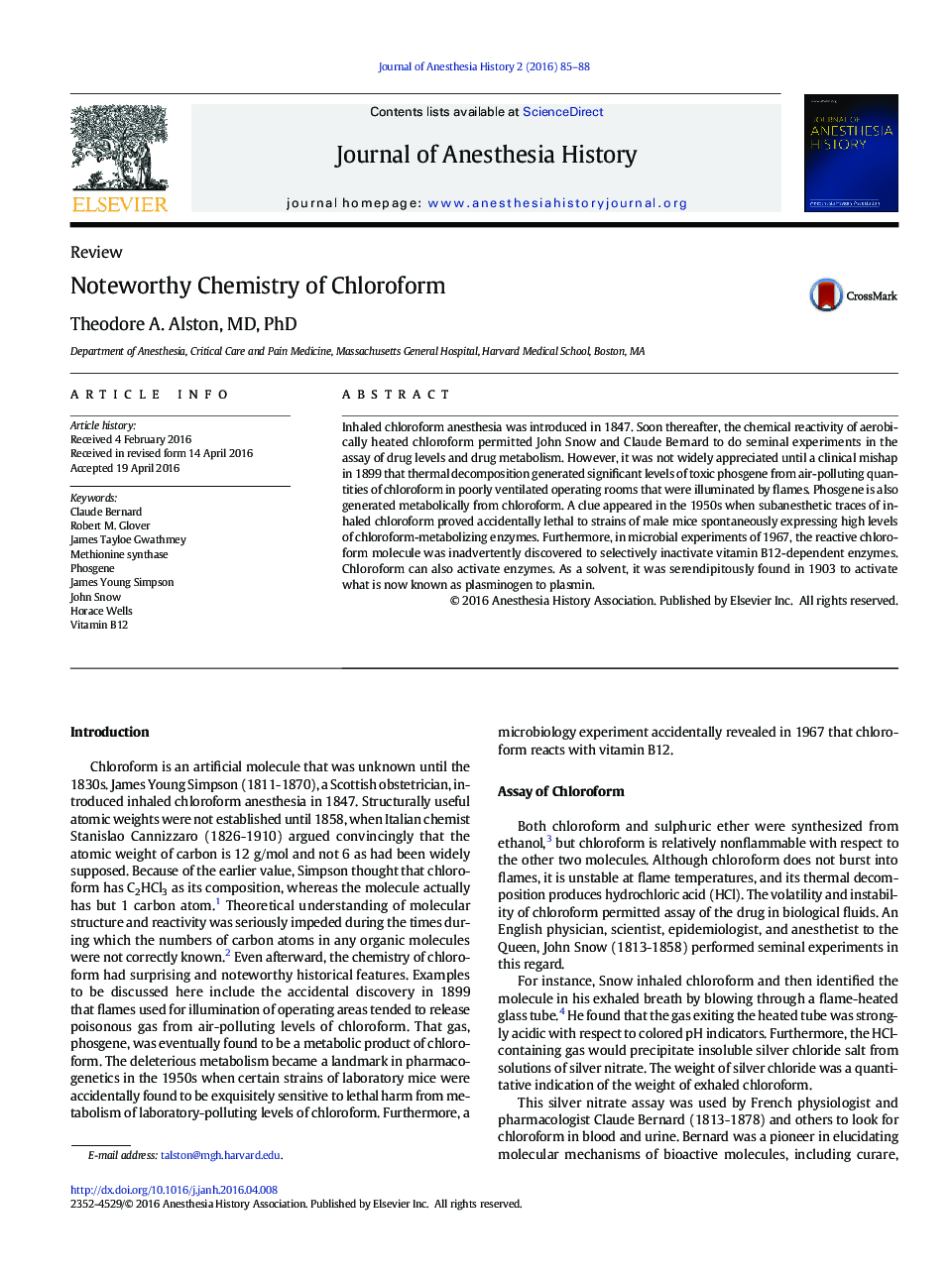| Article ID | Journal | Published Year | Pages | File Type |
|---|---|---|---|---|
| 1082226 | Journal of Anesthesia History | 2016 | 4 Pages |
•Chloroform volatility and reactivity permitted its assay in blood in the1800s.•Chloroform reacted with gaslights of operating areas to yield toxic phosgene.•Phosgene is a genetically sensitive toxic metabolite of chloroform.•Some mice are killed by subanesthetic traces of chloroform.•Chloroform reacts with the vitamin cofactor of some B12-dependent enzymes.
Inhaled chloroform anesthesia was introduced in 1847. Soon thereafter, the chemical reactivity of aerobically heated chloroform permitted John Snow and Claude Bernard to do seminal experiments in the assay of drug levels and drug metabolism. However, it was not widely appreciated until a clinical mishap in 1899 that thermal decomposition generated significant levels of toxic phosgene from air-polluting quantities of chloroform in poorly ventilated operating rooms that were illuminated by flames. Phosgene is also generated metabolically from chloroform. A clue appeared in the 1950s when subanesthetic traces of inhaled chloroform proved accidentally lethal to strains of male mice spontaneously expressing high levels of chloroform-metabolizing enzymes. Furthermore, in microbial experiments of 1967, the reactive chloroform molecule was inadvertently discovered to selectively inactivate vitamin B12-dependent enzymes. Chloroform can also activate enzymes. As a solvent, it was serendipitously found in 1903 to activate what is now known as plasminogen to plasmin.
